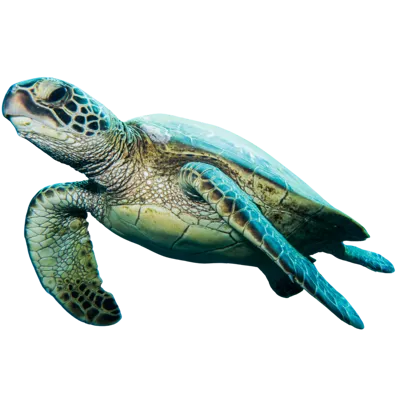Day & Night on the Reef
Explore the Great Barrier Reef
Experience the iconic wonders of the Great Barrier Reef at SEA LIFE Sydney Aquarium! Set entirely on the reef as it transitions through night and day, life on the reef is recreated for guests to encounter & experience, across 24 hours of the day. The exhibit uses state-of-the-art technology to deliver a unique, interactive experience & is the largest Great Barrier Reef exhibit in the world!

See over 400 creatures
This interactive experience takes guests on a colourful journey of the world-famous Great Barrier Reef with state-of-the-art technology, a 1.7 million litre display and over 400 creatures, including Rays, Sharks, Jellyfish, and a huge variety of colourful fish species!

Discover the Turtle Life-cycle
Discover the state-of-the art, animated projection map that showcases the life-cycle of a turtle; from nesting until the birth of the new hatchlings, guests have the chance to interact with virtual baby turtles and guide them safely to the water’s edge. The kids will love this turtle-y engaging and interactive experience

Interact with Bio-luminescence
An interactive light show showcases the rare phenomenon of bioluminescence. Walk through the waves and the bioluminescence will splash under your feet in this motion-sense display that leaves the young and the young-at-heart amazed and wanting to splash through it again and again!

See the Giant Wave
At the end of the experience, look back at the heart of the reef and all of its creatures, through a giant frozen wave feature. This is the perfect backdrop for guests to capture the ultimate family snap or selfie.
SAVE UP TO 20% ON TICKETS
Some of the Animals You’ll Discover

Flatback sea turtle
(Natator depressus)
Coastal Cruiser
The Flatback Sea Turtle gets its name from—yep, you guessed it! Its flatter shell, which looks a bit like a flying saucer cruising the ocean.
Close to Home
Flatbacks love the warm, shallow waters near Australia's coasts. Unlike other sea turtles, they don’t venture far from home—just cruising local seas in style.
Ocean Helper
These turtles help keep the ecosystem healthy by munching on sea cucumbers, jellyfish, and soft corals, playing their part in the marine food web.
Aussie Original
Flatbacks are only found in the waters around Australia, making them true-blue locals and a rare sight anywhere else in the world!

Humphead Maori Wrasse
(Cheilinus undulatus)
Big Head, Big Personality
The Humphead Wrasse get their name from the big bump on their forehead, which looks like a giant forehead!
Rainbow Scales
Humphead wrasse have distinct colours, with males ranging from a bright electric blue to green, purplish-blue or dull blue-green, and females are red-orange on top and pale or white on their bellies.
Adapting to Thrive
Humphead Wrasse are protogynous hermaphrodites, which means they can change from female to male as they grow older depending on environmental and social conditions.
Reef Nomads
They love warm coral reefs and are found across the Indo-Pacific, including Australia’s Great Barrier Reef.
Protect the Big Bump!
Humphead Wrasse are iconic reef fish, classified as Endangered on the IUCN Red List. They are facing severe population declines due to overfishing and habitat degradation.

Zebra Shark
(Stegostoma tigrinum)
Also known as a Leopard Shark
Gentle Spotty Sharks
Even though they’re sharks, Zebra Sharks are harmless to humans and love snacking on shellfish instead.
Long and Lean
These sharks can grow up to 2.5 meters long. That’s almost as long as a small car!
Lazy Day Loungers
Zebra Sharks are nocturnal and love to nap during the day, resting on the ocean floor.
Big Ocean Explorers
Zebra Sharks love warm, tropical waters and are found across the Indian and Pacific Oceans, including Australia’s reefs.
Endangered and Extraordinary
Zebra Sharks are endangered, meaning there aren’t as many of them in the wild as there used to be. You can read more about the StAR Project - ReShark and SEA LIFE Sydney's breeding program for endangered zebra sharks, here.

Foxface Rabbitfish
(Siganus vulpinus)
Distinctive Beauty
The Foxface Rabbitfish is known for its striking yellow body, dark facial mask, and spiny dorsal fins.
Venomous Defence
This species is equipped with venomous spines along its fins, a powerful defence mechanism against predators.
Colour-Changing Adaptations
When evading predators or sleeping, their vibrant yellow can fade to a mottled brown/grey to help them blend with their surroundings.
Widespread Residents
Found across the Indo-Pacific, they inhabit shallow reefs, lagoons, and coastal waters.
Herbivore Extraordinaire
Foxface Rabbitfish primarily feed on algae, making them important for controlling algae growth on coral reefs.

Scribbled Angelfish
(Chaetodontoplus duboulayi)
Super Scribbles
The Scribbled Angelfish gets its name from the wiggly, scribbled patterns on its body—like a piece of underwater art!
Home Sweet Reef
These fish love to live in coral reefs, where they can hide among the rocks and coral while looking for yummy algae to eat.
Reef Cleaners
They help keep the reef clean by nibbling on algae, which is like giving the coral a little cleanup crew.
Locals of the Deep
These vibrant fish are native to Aussie waters, so they’re a special treat to see in our local reefs!
6 Interesting Great Barrier Reef Facts
500,000 years old but the modern form you see today is around 8,000 years old
The Great Barrier Reef was named by Matthew Flinders, an explorer who mapped the Australian coastline from 1801 to 1803. The reef surrounds Australia and protects it by forming a barrier that is dangerous to ships
The Great Barrier Reef - it is so large it can be seen from outer space
It is the world’s largest structure made by living organisms called coral polyps that support a wide and diverse variety of life.
It stretches more than 2,300km along the state of Queensland's coastline, beginning at the tip of Cape York in the north and extending down to Bundaberg in the south.
It contains the world's largest collection of coral reefs, with 600 types of coral, 1,500 species of fish and 4,000 types of molluscs.









